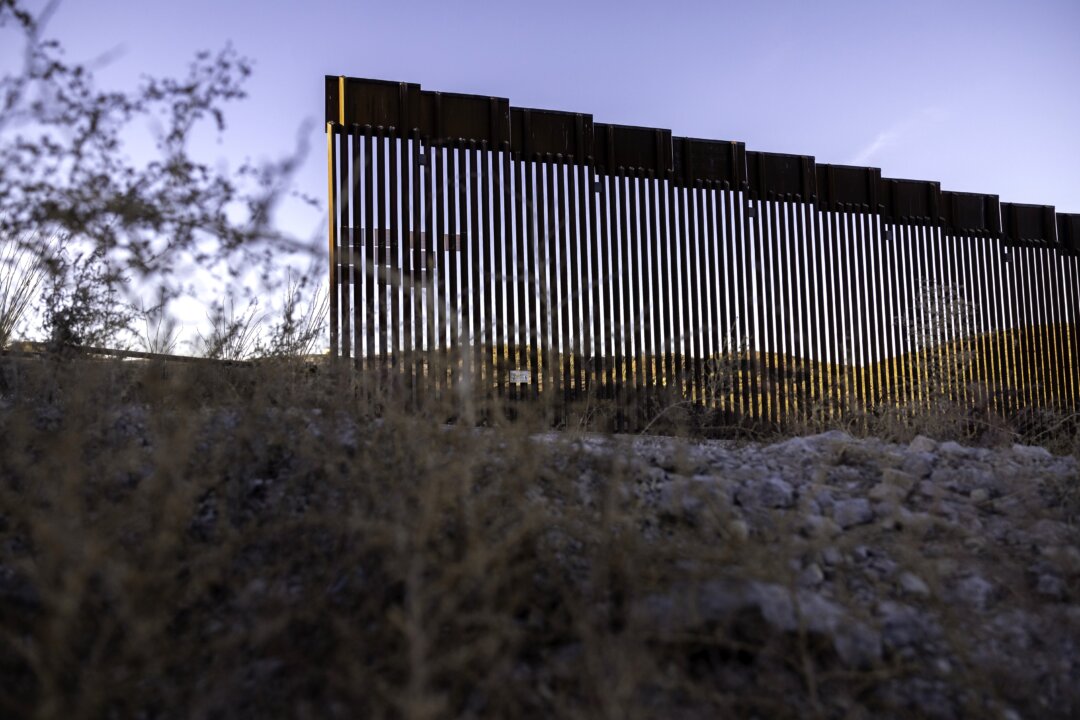The land along the southern border will be under increased military observation, providing more leverage for security operations.
U.S. Northern Command (USNORTHCOM) said on Monday that military personnel can now carry out security support operations on a strip of land recently transferred to the Army’s control, strengthening measures against trespassing by illegal immigrants.
On April 15, the Interior Department announced the handover of nearly 110,000 acres of federal land along the U.S.–Mexico border to the Army for a three-year period. The transfer occurred after a memorandum was issued by President Donald Trump on April 11, which authorized the military to take control of the land in a bid to counter illegal immigration and drug trafficking.
On April 21, USNORTHCOM announced that a 60-foot-wide portion of land, known as the New Mexico National Defense Area (NMNDA), has been added to the U.S. Army’s Fort Huachuca installation. The land covers parts of California, Arizona, and New Mexico.
As such, service members operating in NMNDA are now authorized to carry out several security support operations.
This includes temporarily detaining trespassers until law enforcement authorities take custody of them, searching for trespassers, and implementing crowd control measures to ensure the safety of service members and Department of Defense (DOD) property.
On request, military personnel can also assist with installing temporary barriers, signage, and fencing activities.
“Through these enhanced authorities, U.S. Northern Command will ensure those who illegally trespass in the New Mexico National Defense Area are handed over to Customs and Border Protection or our other law enforcement partners,” Gen. Gregory Guillot, commander of U.S. Northern Command, said in a statement.
“Joint Task Force-Southern Border will conduct enhanced detection and monitoring, which will include vehicle and foot patrols, rotary wing, and fixed surveillance site operations.”
USNORTHCOM is tasked with planning, organizing, and executing homeland defense and civil support missions.
More than 10,000 service members have been deployed along the southern border to boost the roughly 2,500 personnel already in place to support the Customs and Border Protection.
“DoD keeps delivering for the American people. President Trump said to LOCK-DOWN the border—and we are,” Defense Secretary Pete Hegseth said in an April 22 post on social media platform X.The April 11 memorandum issued by Trump asks cabinet members to take “all appropriate actions” to enable the Defense Department to have jurisdiction over federal lands deemed to be “reasonably necessary” for military operations.
Such operations include deploying detection and monitoring systems and constructing barriers along the border.
“Our southern border is under attack from a variety of threats. The complexity of the current situation requires that our military take a more direct role in securing our southern border than in the recent past,” Trump wrote in the memo.
Trump’s use of the military for border and immigration purposes has faced criticism from Democrats. On Feb. 13, two Democratic lawmakers wrote a letter to Hegseth, questioning the deployment of forces at the southern border.
“NORTHCOM’s and SOUTHCOM’s new immigration-related operations place significant—and unnecessary֫—burdens on DoD resources, personnel, and readiness,” the letter reads.
The Defense Department “has estimated that its southern border operations will cost almost $1 billion over just eight months, through the end of this fiscal year, compared to its estimate of $1 billion over three years during the first Trump administration,” the lawmakers wrote.
Meanwhile, the Trump administration is pushing ahead with additional plans to secure the border. On April 8, Department of Homeland Security (DHS) Secretary Kristi Noem issued a waiver to speed up border wall construction in southern California.
This was the first waiver issued by the DHS under the current Trump administration and is related to building 2.5 miles of barrier outside of San Diego.
“To cut through bureaucratic delays, DHS is waiving environmental laws—including the National Environmental Policy Act (NEPA)—that can stall vital projects for months or even years,” the department said in a statement announcing the measure.
“This waiver clears the path for the rapid deployment of physical barriers where they are needed most, reinforcing our commitment to national security and the rule of law.”
The Border Patrol apprehended 7,181 illegal immigrants crossing the southwest border between ports of entry last month, which was a 95 percent drop from March 2024, when authorities apprehended 137,473 individuals.

